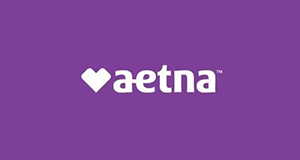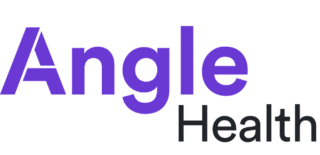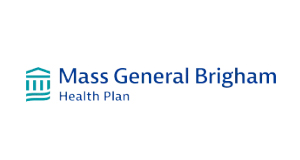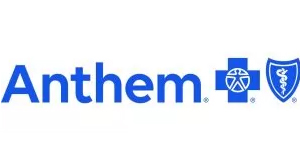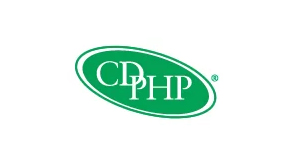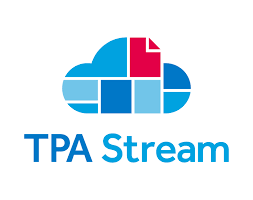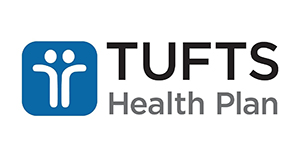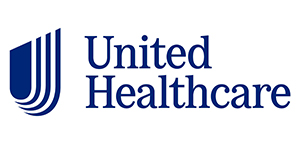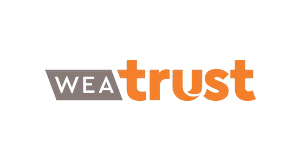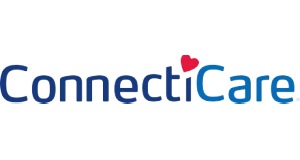
Why The Difference Card Uses a MERP to Build Custom Plan Designs
Table of Contents
There are many employer benefit funding options that maintain pre-tax status with the IRS. One common plan is referred to as an HRA, or Health Reimbursement Arrangement. Some employers allow their workers to direct payroll deductions into an FSA to cover certain medical expenses on a pre-tax basis. Others offer to purchase transit passes on behalf of employees and take advantage of funding accounts to capture tax advantages for doing so.
A lesser well-known option is the Medical Expense Reimbursement Plan or MERP. A MERP is not part of a standard benefits offering, but a MERP can be a valuable tool to achieve various employer healthcare plan objectives, such as benefit improvement, cost reduction and tax savings.
This article defines a MERP, describes its usage rules and details several scenarios where a MERP might be an employer’s preferred approach for health plan design, implementation or renewal.
What Is a Medical Expense Reimbursement Plan (MERP)?
According to the IRS, “The term self-insured medical reimbursement plan means a plan of an employer to reimburse employees for expenses referred to in subsection (b) for which reimbursement is not provided under a policy of accident and health insurance.”
In contrast, the most succinct and readable definition is as follows: “MERPs are employer-funded arrangements that reimburse qualified medical expenses and are typically offered in conjunction with high deductible insurance policies.”
We operate in a market where cost-advantaged alternatives to traditional medical insurance programs abound. The MERP is an option among a solution set that includes pooled arrangements such as PEOs and captives, an expanding spectrum of permissible HRA types, Archer MSAs and 100% self-insurance transferring all risk from carrier to employer. MERPs can be thought of as a type of — or step toward — self-insurance.
How Does MERP Work?
Let’s first discuss the basic mechanics of a MERP program before getting into how to pair it with a Group Medical Insurance Plan. A typical MERP program will follow the steps below.
Employer Sets Allowance Amounts
The employer will begin by specifying how the reimbursement should be paid out. A very simple reimbursement structure would allocate a flat dollar maximum amount to be spent by the employee and eligible dependents on any items on the IRS 213-d schedule within a calendar year.
This monthly allowance reflects the total amount an employer can reimburse the employee for health expenses.
A more complicated reimbursement structure could allocate certain dollar amounts or percentages to specific procedures or categories. Once defined and implemented, typically with an outside administrator like The Difference Card, the plan becomes available for employees.
Employee Purchases Healthcare
Employees then purchase their own healthcare-related services and products at their own expense. Individual health insurance may also be added depending on the MERP and employer rules.
The IRS requires any medical expenses not included in gross income to be verified expenses. Many employer groups find that this substantiation of medical expenses is most effective when performed by a third-party administrator — or TPA.
Administrators, such as the Difference Card, utilize tools such as credit or debit cards that allow employees the convenience of purchasing eligible items with employer-sponsored funds directly.
Employee Submits Proof of Expense
Following the purchase of healthcare, the employee must submit proof of expense to be reimbursed. Any eligible document — like a receipt or explanation of benefits — must have the payment date, a description of the purchased service or product, and the employee's name.
Technology is advancing to reduce friction in this process by supplying information directly from providers and insurers to the TPA. In the past, the employee would have to mail copies of receipts to the TPA.
Employer Reviews Employee Documentation
After the employee gives their proof of purchase to an administrator, this claim is reviewed for completeness and accuracy. If any item listed above needs to be included, the employer will inform the employee and allow time for additional information to be provided.
Employer Reimburses Employee
Finally, reimbursement is issued to the employee for the appropriate dollar amount. Coupled with the prevalence of debit cards, the amount of administrative work required on the end user's part has decreased considerably over the years. The timeline to issue benefits has been reduced, and reimbursements can occur consistently within 48 hours.
What Expenses Can a MERP Reimburse?
Any qualified medical expense from the IRS is eligible for reimbursement. This can include deductibles, coinsurance and co-pays on a tax-free basis. Depending on your employer's MERP plan, the reimbursed items can vary — businesses can restrict any reimbursable expenses as they see fit.
Some examples of typical MERP reimbursements include the following:
- Doctor's office visits
- Emergency room or urgent care visits
- Hospitalization and surgical procedures
- Prescription drugs
- Glasses, contacts and other vision prescriptions
- Physical therapy and acupuncture
- Asthma inhalers and other prescription medications
- Over-the-counter medications, such as pain relievers, antibiotic ointments, eye drops, decongestants, cough syrup and antihistamines
- Women's menstrual care products, including pads, tampons, cups and liners
8 Benefits of MERPs
How can an employer benefit from adding a MERP to their benefits offering? An overview of many specific advantages of this approach follows.
1. Control of Funds
At year-end, any unspent funds stay with the employer and are available for next year’s benefits programs. This contrasts with a traditional insurance plan wherein the insurance carrier retains premium dollars. The Medical expense reimbursement program allocates funds spent toward eligible expenses only if they are incurred rather than representing an obligation to pay. So, for the same cost, employers can provide benefits that will be fairly accessed only by those who need them.
2. Flexibility
A set menu of plan design offerings from a selected carrier often constrains smaller employer groups. By integrating a MERP, employers of all sizes can design their own plan offerings and easily make changes from year to year.
3. Wellness Incentives
This flexibility also makes it easy to implement incentive-based plan designs to promote employer wellness objectives. Wellness programs — with proper incentives — can drive healthy behaviors that help to reduce long-term healthcare costs.
4. Rate Stability
Here is a cool mnemonic: Much Easier Renewal Process. More than just a first-year solution, pairing a MERP with a less expensive insured medical plan option lowers renewal costs, too. This is the case even when our model includes no change to medical trend assumptions
5. Partial Self-Insurance
MERPs are commonly promoted as a way for a group to try out self-funding part of their medical benefit while limiting risk. Partial self-insurance can reduce an employer’s tax liability and lower the overall cost of offering healthcare benefits.
6. Data, Data and More Data
KBI Benefits refers to this advantage of a MERP as an “employee healthcare usage gage” in a post on their company’s blog. This is a great description, particularly with many groups currently unable to view their claims experience due to their size or pooling arrangement. For example, with portions of copay being run through the MERP administrator and the insurer, the employer will suddenly have full access to detailed utilization data specific to their employee population.
7. A Bite-Sized Portion of Consumerism
This approach introduces a behavioral element to an employer’s plan design without financial impact on the plan participant. More on this later.
8. Defined Contribution
Remember the massive shift from pensions to 401k plans during the 80s and 90s? We are just now seeing a similar movement within group medical benefit offerings. Business needs are pushing more and more employers to seek ways to fulfill their desire to care for employees’ physical well-being without exposing themselves to unlimited risk. Using a MERP in conjunction with an insured medical plan allows employers to easily compose a fixed contribution strategy even over multiple years.
MERP vs. HRA: What's the Difference?
In many ways, a MERP looks and acts similarly to a traditional Health Reimbursement Arrangement (HRA).
In addition to the items discussed above, both programs are tax-advantaged. So long as the employer takes appropriate care to maintain plan compliance, funds placed in a MERP are tax-deductible to the employer, and distributions are tax-exempt to employees. This is because the IRS excludes “any medical care reimbursement made to or for the benefit of an employee under a self-insured medical reimbursement plan (within the meaning of section 105(h)(6) )” from the definition of wages.
However, there are a few key differences. Unlike a traditional HRA, employee contribution is permissible with a MERP plan. This allows employers to share administrative expenses with employees in addition to claims and insurance costs. The ability to set premium equivalent rates is a huge aid to an employer considering this program as an alternative to traditional insurance.
Some administrators can even assist with accurate data-based cost projections and formulating premium equivalent rates at plan inception and each subsequent renewal. And, although both are notional benefits programs, meaning that money is earmarked but not spent until claims are actually incurred, the MERP is the only option that does not require any physical account.
MERPs also tend to offer more freedom in a few key ways. First, many HRAs are linked directly to the medical insurer as a part of the service offering. In contrast, placing a MERP with an outside administrator makes it easier to market underlying health insurance plans at renewal to keep rate increases in check with minimal visibility to employees. With a MERP, an employer also can create several different plan options atop a single carrier plan, offering greater flexibility over traditional HRAs, which pair on a 1:1 basis.
Types of MERPs
MERPs can be a broad topic to cover. Employers tend to further define this umbrella term into a more attainable option for their business. These include stand-alone, individual, group or vision and dental plans.
Stand Alone MERP
The example in the last section described the simplest type of MERP — a Stand-Alone MERP. These plans are the most basic in this category, allowing employers to set benefit levels and funding without contemplating any underlying health insurance plan.
MERPs With an Individual Plan
In cases where an employer intends for the MERP to cover premiums for individual coverage for all or a class of employees, we can call this an Individual Coverage MERP. These plans function as a separate option within an organization's health benefits, typically for those not covered under a group plan. In most cases, full-time employees are in group plans, while part-time employees have an individual plan.
MERPs With a Group Plan
In contracts, a medical reimbursement program designed to pair with an employer-provided insurance plan is referred to as a Group Coverage MERP. Within this category, a common example is purchasing an HDHP renewal option which raises the deductible considerably while layering in a MERP to minimize the impact of this change to the employee. This is often called a Deductible MERP.
MERPs for Vision and Dental
MERPS can also be established as dental and vision only. Pricing advantages over insured group coverage plans are even stronger with dental and vision benefits, and there is a growing appetite in the market to forego expensive insured products and instead offer reimbursement plans to fund these services.
Groups who may not have been able to afford coverage in the past — as well as groups with favorable loss ratios who would like more of their benefit dollars to wind up in the hands of their employees — may find these alternative funding mechanisms attractive.
How to Explain a MERP Program to Employees
Year after year, benefits consultants publish compelling arguments as HR departments watch the insurance industry stagnate. An employer can use the MERP strategy to raise employee awareness of costs through separately funded reimbursements with no financial impact. This behavioral change for users of the plan is a micro-step toward consumerism, allowing gradual change.
The primary concern cited by employer groups evaluating a MERP-based renewal strategy is the impact on their employees. In The Difference Card's experience, employees who understand that the new card permits their employer to offer the same benefit levels, carrier and network at significantly lower rates can accept and even value the solution. With traditional health insurance, employee familiarity requires less hand-holding.
Communication is key to a successful rollout when setting up a MERP for the first time. Employees need a concise explanation of which benefits will be funded by the MERP, which will continue to be paid by the insurer and when to contact the plan administrator for service. Typically a debit card will be provided — if not, employees should understand how they will receive reimbursements from the MERP.
Ongoing employees will need to access full instructions with particular emphasis during future enrollment periods while making their plan selections. While there is no substitute for an educational conversation, being able to supplement more with abundant self-service options only leads to greater success and satisfaction.
Simplify Your Employer Benefits With The Difference Card
The Difference Card makes it easy to set up a MERP you can use to reduce healthcare costs and improve employee benefits. We offer prepackaged suggestions based on what we have seen as most effective across our book of business.
Our employees pride themselves on adept handling of all aspects of administering your plan. Each client is assigned a dedicated account executive to assist with annual financial projections. We will work with you to develop a communication plan and benefit materials. Employees can also contact our participant call center for a detailed, knowledgeable response to any questions.
If you are interested in learning more about our health benefit plans and healthcare products, contact a representative for The Difference Card today!




